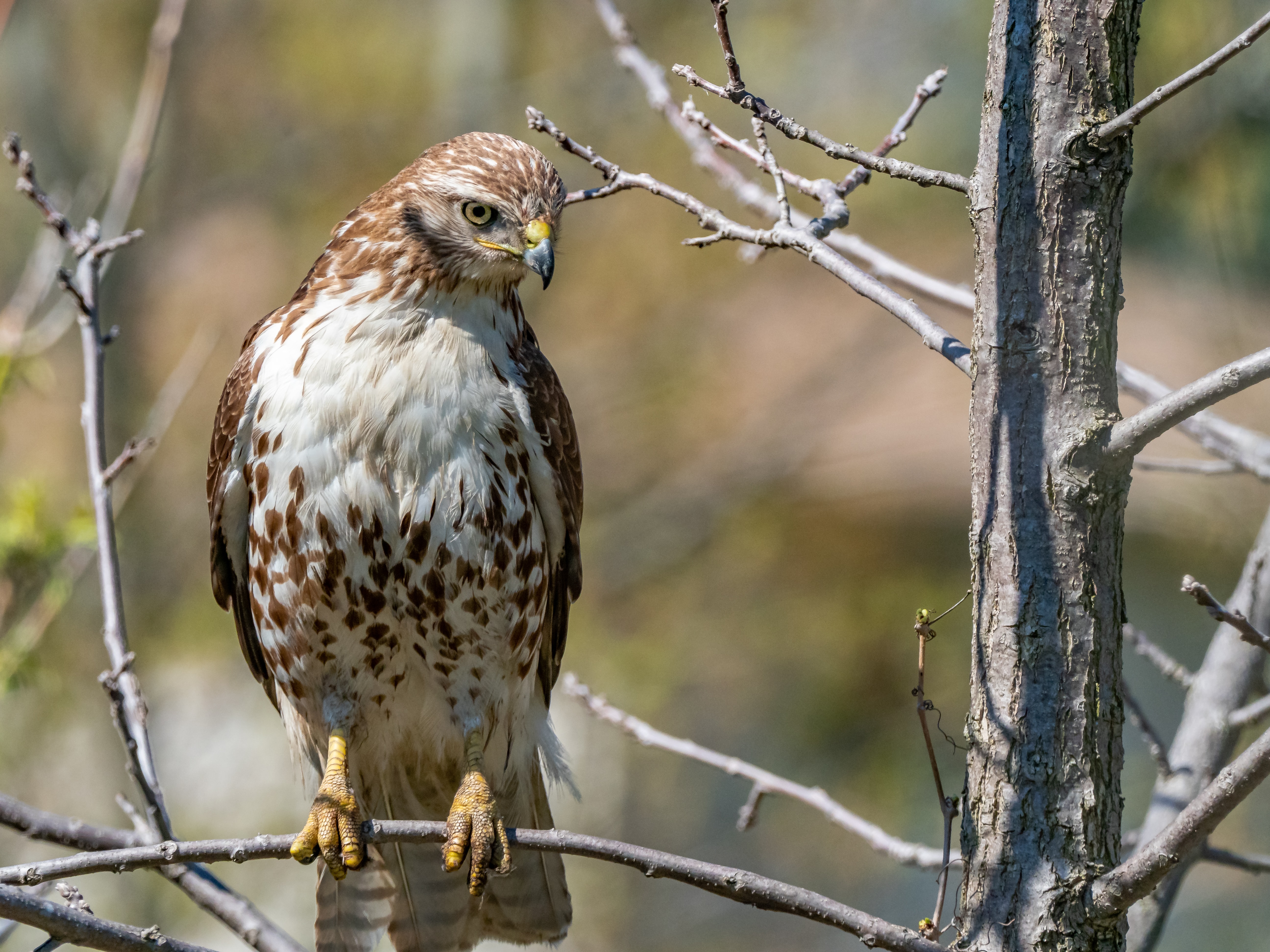Red-Tailed Hawk Photo by Patrice Bouchard. (use permitted with attribution).
Official State Raptor of New Hampshire
In March 2019, the Red-tailed Hawk became the official state raptor of New Hampshire. Besides Idaho, the state became only the second state to have a state raptor. New Hampshire already had a state bird, the Purple Finch. However, a group of eighth-graders succeeded in pushing through a bill that elected the Red-Tailed Hawk as the State Raptor.
New Hampshire school children had to make two attempts to get the Red-tailed Hawk accepted as state raptor. The first try ended when politicians nixed the effort. Some felt that the bird was too aggressive to represent New Hampshire well. Nevertheless, school children persisted in their efforts to have the remarkable bird accepted, and, a few years later, they finally succeeded.
These magnificent creatures have many positive traits besides their beauty. The birds eat small rodents such as rats, mice, and voles. These tiny pests can harm crops, so farmers welcome the sight of Red-tailed hawks on their land.
Benefits of Bird-Watching
Going for a walk and looking for Red-tailed hawks can have great personal benefits. Disconnecting from everyday stresses and immersing yourself in nature can improve mental health.
Doctors often recommend mild exercise for low-grade health problems. For example, walking can help keep you in shape and reduce the stress and frequency of flare-ups.
Getting outside can also give you a short break from electronics. But, of course, outside, even excellent wireless access points for mobile connectivity have limits. Unlike electronics, the joys of watching nature, and especially the Red-tailed hawk, have no boundaries amidst the great outdoors.
Red-Tailed Hawk Facts
New Hampshire still had a state bird before the Red-tailed Hawk became New Hampshire’s state raptor. This bird, the Purple Finch, lives primarily in the Great Lakes and New England. It migrates between certain areas of North America but resides in New Hampshire all year round. But, unlike the Purple Finch, the Red-Tailed Hawk has no unique association with New Hampshire. Nature lovers can find the raptor across the Americas.
The Red-tailed hawk lives across North, South, and Central America. Its appearance varies across species and geographic areas. Not all of them look the same or even have red tails. Only the adult male of the species native to New Hampshire has a red tail. These large birds have wingspans that can reach up to forty-nine inches across. Younger Red-tailed hawks of this species also do not have the characteristic red tail.
Bird watchers can identify Red-tailed hawks in New Hampshire by the dark band around their stomachs, their white chests, and, of course, their red tails. When the hawks fly, watchers can also often see two brown stripes under the edges of each wing.
Red-tailed hawks tend to roost on tall trees, poles, and even on buildings. They enjoy open spaces and often make their homes in terrain that logging or other human activity has opened up. They fly in circles, coasting on the wind while barely moving their wings. Open spaces and tall man-made and natural structures allow the raptors to use their sharp eyes to search for their prey over vast areas of unobstructed land.
The hawks sometimes emit a shrill cry resembling an old-time train engine shrieking as they soar overhead.
North America alone has sixteen species of Red-tailed Hawks. All Red-tailed hawks belong to the birds known as Accipitridae and the genus Buteo. All buteos are raptors with large wingspans, but Red-tailed hawks are the largest of this genus in the east of North America.
Aside from tiny mammals, the hawks also eat other smaller birds, reptiles, and even, on occasion, deceased animals. In addition, red-tailed hawks perform courtship dances in the sky. When they find a partner, they tend toward monogamy and sometimes even mate for life.
After building their nests, both parent hawks watch over the eggs. Normally, the female Red-tailed hawk will lay two to three. After the chicks hatch, the male hawk hunts and brings food back to the nest while the female watches over the nest.
Hatchlings reach partial maturity after roughly two and a half months. At this point, the young birds can fly. At full maturity, the Red-tailed hawks have all of their markings. Their bodies can become up to nineteen inches long, even excluding their huge wingspan.
Article provided by Fay Smith. Fay is a mother and an advocate of all things natural. She is regular contributor for several websites.

